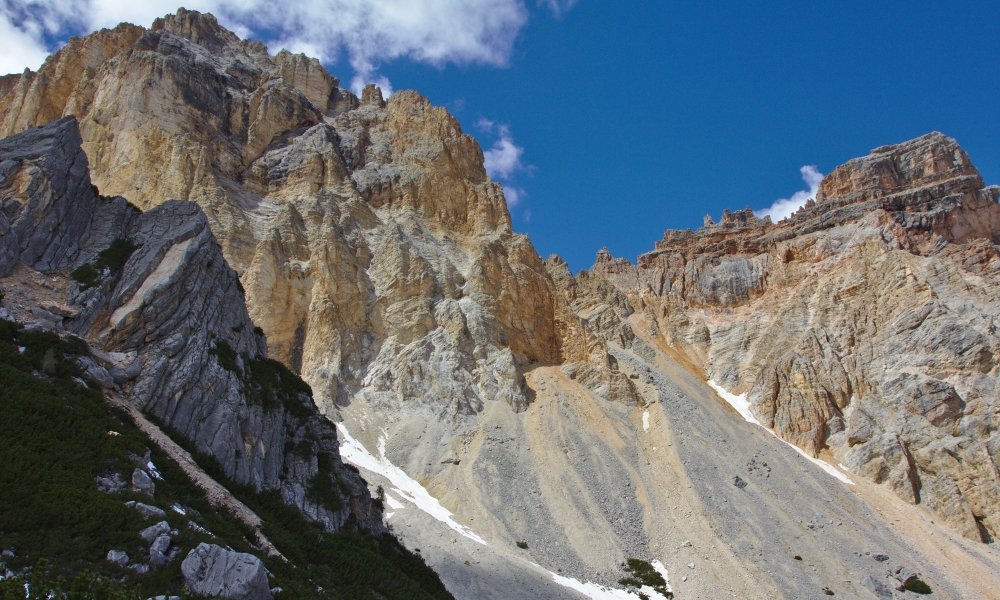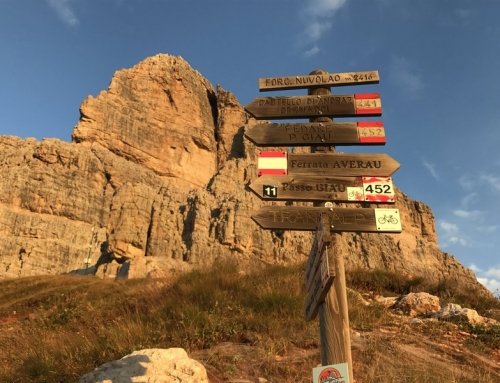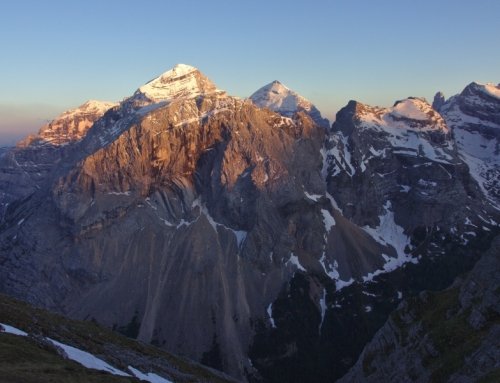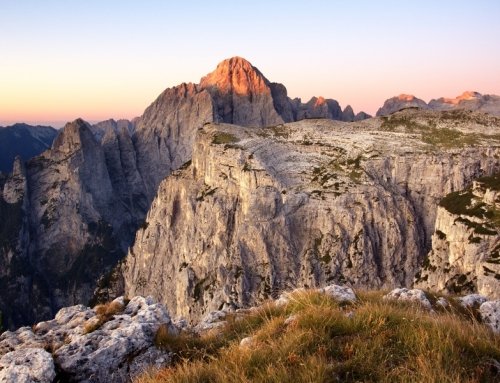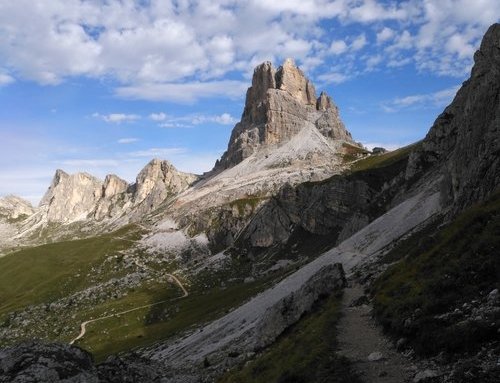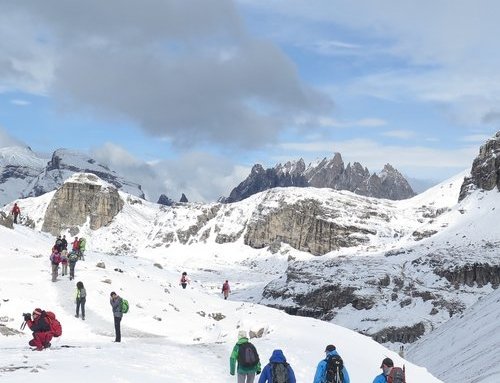Seldom does a mountain range take its name from the underlying rock structure, perhaps with the notable exception of the Rocky mountains. However this may not be such a fitting example given that “rocky” is a generic rather than a specific term such as “dolomite”.
So,why are they called the Dolomites?
For my grandparents these were just “our mountains” and as a child I don’t recall the word Dolomites being used very often. Back in the late 1800’s geologists and naturalists were against calling the Dolomites as such, correctly stating that dolomitic mountain ranges exist in many other parts of the globe. These were referred to the Venetian and SudTirol Alps.
Back in 1864 two English scholars by the names of Josiah Gilbert and George C. Churchill wrote a detailed diary of their excursions in the area in 1861, 1862 and 1863, with meticulous descriptions of their travels. They went on to publish their memoirs in the book “The Dolomite Mountains..”.Their writings give us a precious and rare glimpse of everyday life of what was a secluded and little knowns corner of the Alps. Remember, at the time there were few roads and communications with the more developed plains to the south and Venice were sketchy. The growing season was short and only through hard labor were the locals able to make a living. Times were difficult and the notion of tourism was a blessing that came much later.
In the ensuing years the term Dolomites continued to be hotly contested by other scholars. A local name could have been a valid option – had there been one. But locals did not have a specific name for many of the mountains surrounding their back-yard, let alone a mountain range. It is interesting that even today certain alpine peaks are referred to as Cima Undici, Cima Dodici and so on. Translated this means Peak 11, Peak 12 etc.
It was not until after WWI that the term Dolomites became widely used and accepted. Today there is unanimous recognition of the word Dolomites and most mountain hikers and climbers have a pretty well defined picture of its location
How about the name itself, where does it come from?
The term Dolomites traces its origins to the Marquis Deodat de Dolomieu, who traveled extensively in the area studying and recording his findings in the tradition of the scholars at the turn of the 17th century. Unlike limestone that reacts vigorously in contact with hydrochloric acid, the Marquis de Dolomieu noticed that dolomite rock had a very weak reaction. Although the two rocks looked very much alike, he realized that the chemical composition must differ. Since this chemical formula was unknown he sent it to his friend N.T. de Saussure for further analysis. In 1796 de Saussure presented his findings at a scientific meeting and called the rock Dolomite in honor of his friend Dolomieu who had made the initial discovery.
